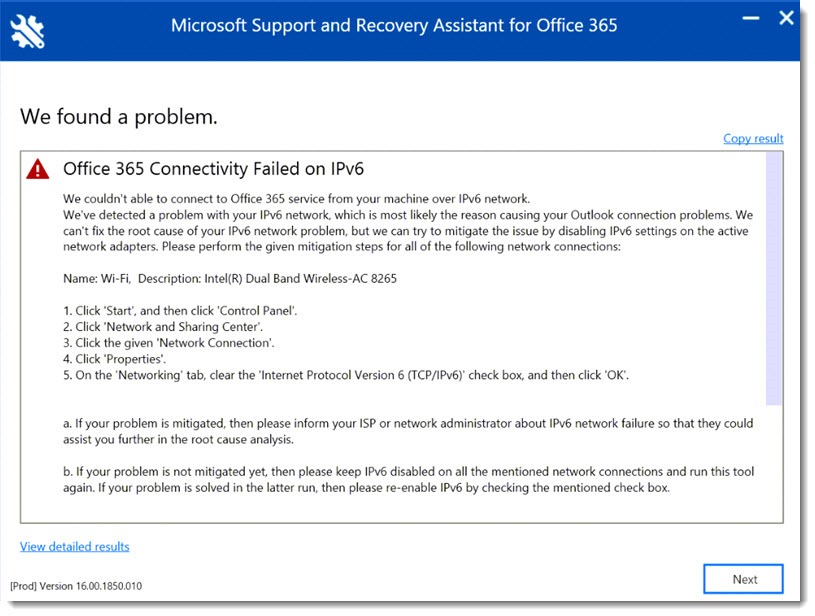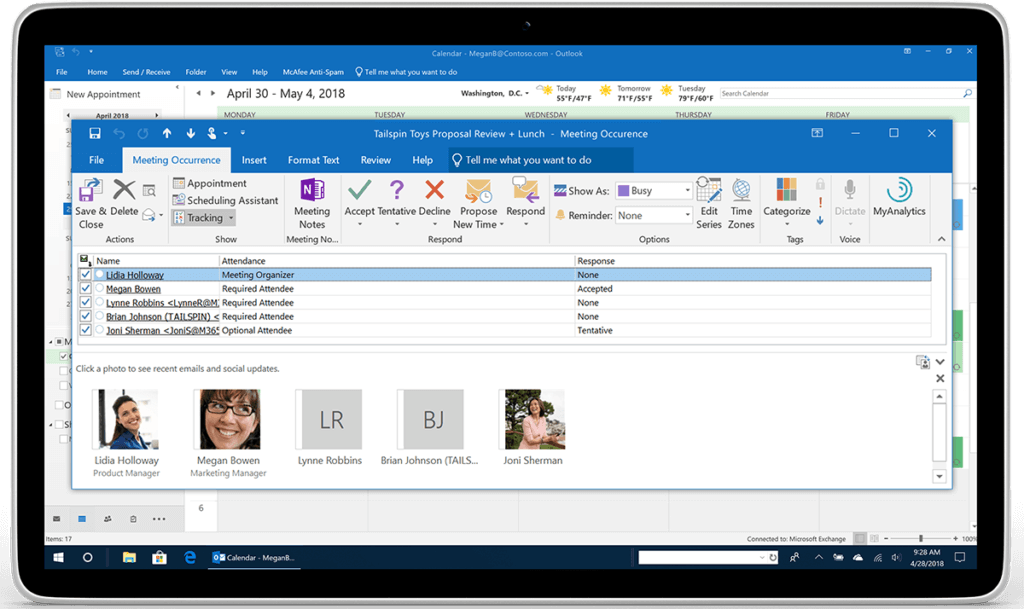Steps to Fix Outlook 2011 For Mac Keeps Asking Password of Office 365 Account. If the Keychain Access program is corrupted, then whenever the Outlook user is trying to connect with O365 on Mac platform, the password problem arises. As a result, Outlook 2016 for Mac keeps asking for password of Office 365 account. Outlook 2019, Outlook 2016, Outlook 2013, Outlook 2010, Outlook for Office 365; In this article. Original KB number: 3134780. Microsoft Outlook cannot connect to your Microsoft Exchange mailbox, and the connection status is displayed as Disconnected. Sep 13, 2017 Outlook 2013 and 2016 can occasionally lose their connection to an Office 365 hosted Exchange mailbox. I’ve dealt with it several times in the last year or so, mostly in the last few months. The specific problem that I’m describing happens this way:. Outlook shows Disconnected or Trying to connect. Nothing has changed on the computer.
Outlook for Microsoft 365 Outlook 2019 Outlook 2016 Office for business Outlook 2013 Office 365 Small. Outlook 2013, or Outlook 2016. In Outlook 2010, Outlook. Collaborate for free with online versions of Microsoft Word, PowerPoint, Excel, and OneNote. Save documents, spreadsheets, and presentations online, in OneDrive.
-->Symptoms
Outlook Office 365
When you try to create an Outlook profile or connect to a Microsoft Office 365 mailbox, you're continually prompted for credentials while the client displays a 'trying to connect...' message. If you cancel the credentials prompt, you receive the following error message:
The connection to Microsoft Exchange is unavailable. Outlook must be online or connected to complete this action.
Cause

This issue can occur if the Logon network security setting on the Security tab of the Microsoft Exchange dialog box is set to a value other than Anonymous Authentication.
Resolution
Note
Microsoft Outlook 2016 and some recent builds of Outlook 2013 are not affected by this issue. Those versions have been updated to prevent the problem that is described in the 'Symptoms' section. These versions have the Logon network security setting disabled or removed from the Microsoft Exchange email account settings.
For newer versions of Outlook
You may be an Office 365 customer who is experiencing the error that is described in the 'Symptoms' section when you try to connect to an Exchange Online mailbox. You may also already be running newer versions of Outlook 2013 or Outlook 2016. If both conditions are true,it is highly recommended that you use the Outlook keeps asking for my password diagnostic to troubleshoot issues in which Outlook continually prompts for a password.

This diagnostic does automated checks and returns possible solutions for you to use to try to fix any detected issues.
If you are connecting to an Exchange On-Premises mailbox, see the following articles for additional troubleshooting:
Additionally, you can view the following forum thread for common causes:
For affected versions of Outlook
If you have an older version of Outlook, change the Logon network security setting to Anonymous Authentication to fix this issue. To do this, follow these steps:
Exit Outlook.
Open Control Panel, and then do one of the following:
- In Windows 10, Windows 8.1, or Windows 7, click Start, type control panel in the search box, and then press Enter.
- In Windows 8, swipe in from the right side to open the charms, tap or click Search, and then type control panel in the search box. Or, type control panel at the Start screen, and then tap or click Control Panel in the search results.
In Control Panel, locate and double-click Mail.
Click Show Profiles, select your Outlook profile, and then click Properties.
Click E-mail Accounts.
Select your email account, and then click Change.
In the Change Account dialog box, click More Settings.
In the Microsoft Exchange dialog box, select the Security tab.
On the Logon network security list, select Anonymous Authentication, and then click OK.
Click Next, click Finish, and then click Close on the Account Settings dialog box.
Click Close on the Mail Setup dialog box, and then click OK to close the Mail control panel.
More Information
To locate and view the registry setting for Anonymous Authentication in the Outlook profile, follow these steps.
Important
Modifying the Outlook profile by using the 'Profiles' registry path is not supported and may cause your Outlook profile to be in an unsupported state. Follow the steps in this section carefully. Serious problems might occur if you modify the registry incorrectly. Before you access it, back up the registry for restoration in case problems occur.
Open the Registry Editor.
- In Windows 10, Windows 8.1, or Windows 8, press the Windows logo key+R to open the Run dialog box, type regedit.exe, and then click OK.
- In Windows 7, click Start, type regedit in the Start Search box, and then press Enter. If you're prompted for an administrator password or for confirmation, type the password, or click Allow.
Locate the registry path appropriate for your version of Outlook:
For Outlook 2013
HKEY_CURRENT_USERSoftwareMicrosoftOffice15.0OutlookProfiles
For Outlook 2010 and 2007
HKEY_CURRENT_USERSoftwareMicrosoftWindows NTCurrentVersionWindows Messaging SubsystemProfiles
Under this subkey, locate and expand the name of your Outlook profile.
Under the profile, locate and expand the 9375CFF0413111d3B88A00104B2A6676 key.
Under the 9375CFF0413111d3B88A00104B2A6676 key, you see a subkey for each account in your profile. Select the first subfolder (00000001), and then examine the data of the Account Name binary value by double-clicking the value. Repeat this process until you find the Account Name value that includes your SMTP address. For example, the Account Name value points to **guidopica@contoso.com** under the 00000003 subkey.
Under the 0000000x subkey, locate the Service UID binary value. It represents a GUID (for example, c3 d1 9a 7b 80 1b c4 4a 96 0a e5 b6 3b f9 7c 7e).
Locate the subfolder in your profile that matches the GUID value identified in step 6 (for example, c3d19a7b801bc44a960ae5b63bf97c7e).
Under the subfolder that you found in step 7, examine the 01023d0d binary value. It represents a GUID (for example, 5f cf d5 f1 ba 5c 6f 45 b3 57 cc 5e 0d 16 94 58).
Locate the subfolder in your profile that matches the GUID value identified in step 8 (for example, 5fcfd5f1ba5c6f45b357cc5e0d169458).
Under the subkey found in step 9, examine the value of the 00036619 binary value. This value determines whether Outlook is using Anonymous Authentication.
Binary: 00036619
Data: 01 f0 00 80Anonymous Authentication
Any other value represents an authentication method other than Anonymous.
Symptoms
When you try to create an Outlook profile or connect to a Microsoft Office 365 mailbox, you're continually prompted for credentials while the client displays a 'trying to connect...' message. If you cancel the credentials prompt, you receive the following error message:
The connection to Microsoft Exchange is unavailable. Outlook must be online or connected to complete this action.
Cause
This issue can occur if the Logon network security setting on the Security tab of the Microsoft Exchange dialog box is set to a value other than Anonymous Authentication.
Resolution
Note
Microsoft Outlook 2016 and some recent builds of Outlook 2013 are not affected by this issue. Those versions have been updated to prevent the problem that is described in the 'Symptoms' section. These versions have the Logon network security setting disabled or removed from the Microsoft Exchange email account settings.
For newer versions of Outlook
You may be an Office 365 customer who is experiencing the error that is described in the 'Symptoms' section when you try to connect to an Exchange Online mailbox. You may also already be running newer versions of Outlook 2013 or Outlook 2016. If both conditions are true,it is highly recommended that you use the Outlook keeps asking for my password diagnostic to troubleshoot issues in which Outlook continually prompts for a password.
This diagnostic does automated checks and returns possible solutions for you to use to try to fix any detected issues.
If you are connecting to an Exchange On-Premises mailbox, see the following articles for additional troubleshooting:
Additionally, you can view the following forum thread for common causes:
Office 365 Keeps Disconnecting To Outlook 2016 For Mac Download

For affected versions of Outlook
If you have an older version of Outlook, change the Logon network security setting to Anonymous Authentication to fix this issue. To do this, follow these steps:
Exit Outlook.
Open Control Panel, and then do one of the following:
- In Windows 10, Windows 8.1, or Windows 7, click Start, type control panel in the search box, and then press Enter.
- In Windows 8, swipe in from the right side to open the charms, tap or click Search, and then type control panel in the search box. Or, type control panel at the Start screen, and then tap or click Control Panel in the search results.
In Control Panel, locate and double-click Mail.
Click Show Profiles, select your Outlook profile, and then click Properties.
Click E-mail Accounts.
Select your email account, and then click Change.
In the Change Account dialog box, click More Settings.
In the Microsoft Exchange dialog box, select the Security tab.
On the Logon network security list, select Anonymous Authentication, and then click OK.
Click Next, click Finish, and then click Close on the Account Settings dialog box.
Click Close on the Mail Setup dialog box, and then click OK to close the Mail control panel.
Access For Mac Office 365

More Information
To locate and view the registry setting for Anonymous Authentication in the Outlook profile, follow these steps.
Important
Uninstall Outlook 365 On Mac
Modifying the Outlook profile by using the 'Profiles' registry path is not supported and may cause your Outlook profile to be in an unsupported state. Follow the steps in this section carefully. Serious problems might occur if you modify the registry incorrectly. Before you access it, back up the registry for restoration in case problems occur.
Office 365 Keeps Disconnecting To Outlook 2016 For Mac How To Export Contacts To Excel
Open the Registry Editor.
- In Windows 10, Windows 8.1, or Windows 8, press the Windows logo key+R to open the Run dialog box, type regedit.exe, and then click OK.
- In Windows 7, click Start, type regedit in the Start Search box, and then press Enter. If you're prompted for an administrator password or for confirmation, type the password, or click Allow.
Locate the registry path appropriate for your version of Outlook:
For Outlook 2013
HKEY_CURRENT_USERSoftwareMicrosoftOffice15.0OutlookProfiles
For Outlook 2010 and 2007
HKEY_CURRENT_USERSoftwareMicrosoftWindows NTCurrentVersionWindows Messaging SubsystemProfiles
Under this subkey, locate and expand the name of your Outlook profile.
Under the profile, locate and expand the 9375CFF0413111d3B88A00104B2A6676 key.
Under the 9375CFF0413111d3B88A00104B2A6676 key, you see a subkey for each account in your profile. Select the first subfolder (00000001), and then examine the data of the Account Name binary value by double-clicking the value. Repeat this process until you find the Account Name value that includes your SMTP address. For example, the Account Name value points to **guidopica@contoso.com** under the 00000003 subkey.
Under the 0000000x subkey, locate the Service UID binary value. It represents a GUID (for example, c3 d1 9a 7b 80 1b c4 4a 96 0a e5 b6 3b f9 7c 7e).
Locate the subfolder in your profile that matches the GUID value identified in step 6 (for example, c3d19a7b801bc44a960ae5b63bf97c7e).
Under the subfolder that you found in step 7, examine the 01023d0d binary value. It represents a GUID (for example, 5f cf d5 f1 ba 5c 6f 45 b3 57 cc 5e 0d 16 94 58).
Locate the subfolder in your profile that matches the GUID value identified in step 8 (for example, 5fcfd5f1ba5c6f45b357cc5e0d169458).
Under the subkey found in step 9, examine the value of the 00036619 binary value. This value determines whether Outlook is using Anonymous Authentication.
Binary: 00036619
Data: 01 f0 00 80Anonymous Authentication
Any other value represents an authentication method other than Anonymous.